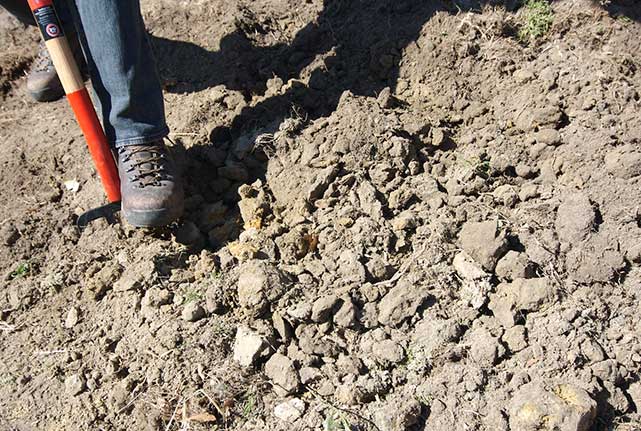As our spring days become warmer and warmer, now is the time to think about soil preparation for your garden. So before you get out there and start shoveling or tilling the soil consider the following when you should start “working” the soil.
Too Early
Clumps. That is what happens when you start to work the soil too early. When the ground is still saturated with water from melting snow or spring rain, turning the soil over will give clumps that will be difficult to break down at a later time. Wet soil doesn’t break up into loose and fine particles of dirt that create miniscule air pockets perfect for plant roots to grow in.
Dried Yet?
You can get a moisture reader which is expensive, but the surefire way is a much simpler and you’ll know whether or not the soil has dried out enough to be worked on. Grab a handful of soil (the size of a baseball) and squeeze the soil together until it forms a ball. If the dirt can be crumbled by pressing your fingers together or dropping it from table height, then you’ve got soil that is dry enough to start digging. If the ball of dirt maintains it shape or breaks into solid sections rather than loose soil, there is still too much water in the dirt.
Mississauga Soil
Approximately 60% of Mississauga’s soil being clay, here are some pointers that will help you understand the soil in your yard:
- Heavy clay soil – At 75% to 100% moisture, the clay soil is too wet, it is dark in color and feels slick when rubbed between thumb and forefinger. The soil will be completely pliable and you can draw with it. A ball will form moisture content is less than 50%.
- Coarse clay soil – This soil is more of a sandy loam or silt loam. At 50% moisture, you can probably form a ball and will tend to crumble. At 75% to 100% moisture it will be similar to a heavy clay soil.
- Coarse sandy soil – A ball will not form at less than 50% moisture. At 75% to 100% moisture, a weak ball can be form but shatter easily.
The “RIGHT” soil
Having the right soil can greatly affect the quality of your plants. Soil composition should be balanced, well-drained, fertile and with a pH (acidity level) between 6 and 7. If the soil is too acidic, add some lime. If you have sandy soil where there is not enough organic matter OR if you have clay soil which is too heavy and compact, you need to add decomposed manure or compost to help improve soil structure and composition while providing the nutrients required by the plants.
Image sources:https://www.flickr.com/photos/scrap_pile/

